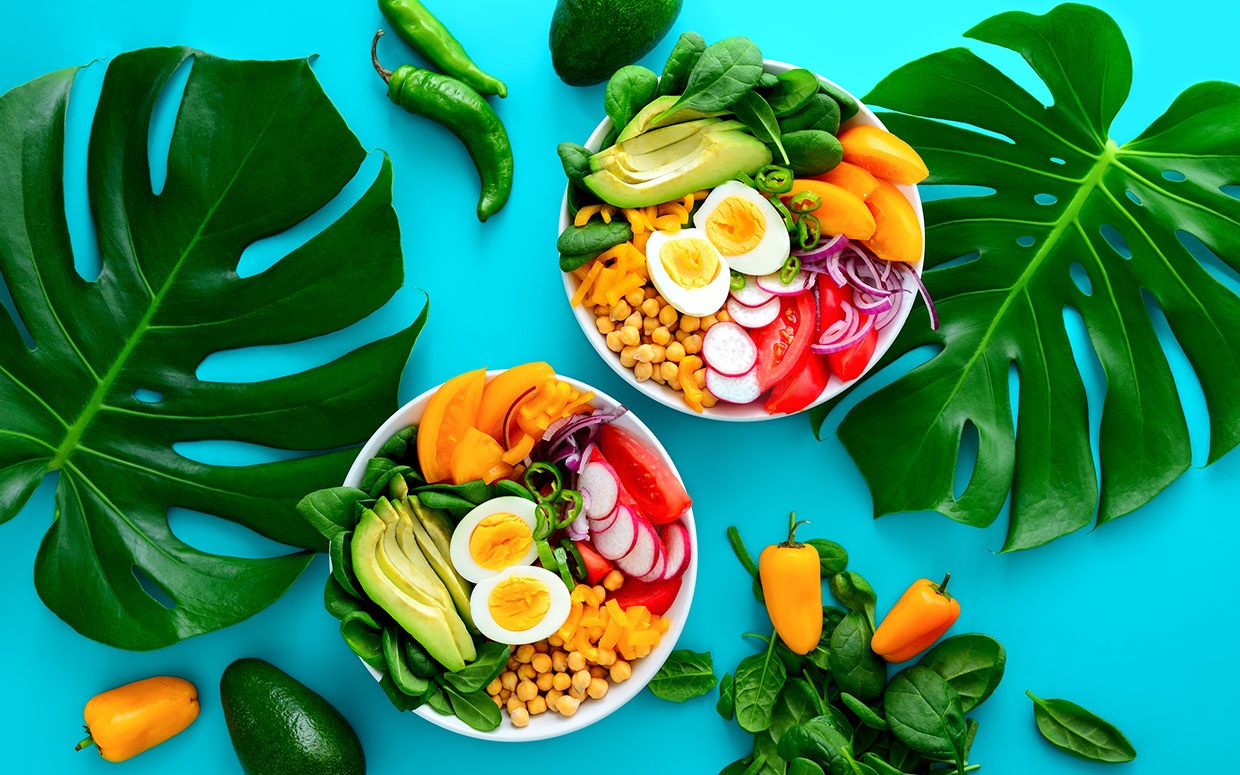South Beach Diet vegetables play a crucial role in the success of this popular weight-loss plan. Understanding which vegetables are permitted, how to prepare them, and their nutritional benefits is key to maximizing the diet’s effectiveness. This guide delves into the specifics of incorporating a wide variety of vegetables into your South Beach Diet meals, offering practical tips, delicious recipes, and solutions to common challenges.
From creating a weekly meal plan rich in nutrient-dense vegetables to mastering healthy cooking techniques, we aim to empower you to navigate the South Beach Diet with confidence and culinary creativity. We’ll explore the glycemic index of various vegetables, discuss strategies for managing potential digestive issues, and provide valuable insights into shopping, storage, and minimizing food waste. This comprehensive resource is designed to help you reap the full health benefits of this dietary approach.
Vegetable Preparation and Recipes
The South Beach Diet emphasizes the importance of incorporating plenty of non-starchy vegetables into your meals. Proper preparation is key to maximizing their nutritional value and enhancing their flavor, ensuring they remain a delicious and satisfying part of your diet. This section will explore healthy cooking methods and provide some delicious and compliant recipes.
Healthy Cooking Methods for South Beach Diet Vegetables
The South Beach Diet encourages cooking methods that preserve the nutrients and natural flavors of vegetables. Steaming, grilling, roasting, and sautéing (with minimal oil) are all excellent choices. Boiling can leach out some nutrients, so it’s best to minimize its use. Microwaving is a quick and convenient option, particularly for steaming vegetables. Remember to season your vegetables appropriately to enhance their taste without relying on excessive amounts of salt or high-carbohydrate sauces.
South Beach Diet Vegetable Recipes
Three recipes that highlight the versatility of vegetables within the South Beach Diet framework are provided below. These recipes are designed to be low in carbohydrates and high in nutrients.
Roasted Mediterranean Vegetables
This recipe is simple to prepare and offers a delicious combination of flavors. The roasting process intensifies the natural sweetness of the vegetables.
Ingredients: 1 red bell pepper (chopped), 1 yellow bell pepper (chopped), 1 zucchini (chopped), 1 cup cherry tomatoes, 1/2 red onion (sliced), 2 tablespoons olive oil, 1 teaspoon dried oregano, 1/2 teaspoon dried basil, salt and pepper to taste.
Preparation: Preheat oven to 400°F (200°C). Toss all vegetables with olive oil, oregano, basil, salt, and pepper. Spread on a baking sheet and roast for 20-25 minutes, or until tender and slightly browned.
Sautéed Spinach with Garlic and Mushrooms
A quick and easy side dish, perfect for adding a boost of nutrients to any South Beach Diet meal. The garlic and mushrooms add depth of flavor.
Ingredients: 10 ounces fresh spinach, 2 cloves garlic (minced), 1 cup sliced mushrooms, 1 tablespoon olive oil, salt and pepper to taste.
Preparation: Heat olive oil in a pan over medium heat. Add garlic and mushrooms and sauté for 3-5 minutes, until softened. Add spinach and cook until wilted, about 2-3 minutes. Season with salt and pepper.
Grilled Asparagus with Lemon and Herbs
Grilling asparagus brings out its natural sweetness and creates a slightly charred flavor. The lemon and herbs add a bright and refreshing touch.
Ingredients: 1 pound asparagus, 1 tablespoon olive oil, 1 lemon (juiced and zested), 1 tablespoon chopped fresh parsley, salt and pepper to taste.
Preparation: Preheat grill to medium heat. Toss asparagus with olive oil, lemon juice, lemon zest, parsley, salt, and pepper. Grill for 5-7 minutes, turning occasionally, until tender-crisp.
Herbs and Spices for South Beach Diet Vegetables
A variety of herbs and spices can enhance the flavor of your South Beach Diet vegetables without adding significant carbohydrates. These additions help to create more interesting and flavorful meals, encouraging adherence to the diet.
Examples include: Garlic, onion powder, oregano, basil, thyme, rosemary, parsley, chives, dill, cumin, coriander, chili powder (use sparingly).
Incorporating Vegetables into South Beach Diet Meals
Vegetables can easily be incorporated into all three main meals of the day. They add volume, nutrients, and flavor to your meals, helping you feel full and satisfied.
Breakfast: Add sautéed spinach or mushrooms to your omelet or scrambled eggs. Include sliced bell peppers or onions in your breakfast burrito (using low-carb tortillas).
Lunch: Enjoy a large salad with grilled chicken or fish and a variety of vegetables. Add roasted vegetables to your chicken salad sandwich (using low-carb bread or lettuce wraps).
Dinner: Serve a main course of grilled fish or chicken with a side of roasted or steamed vegetables. Include vegetables in your stir-fries (using low-carb sauces).
Addressing Common Concerns and Challenges
Embarking on the South Beach Diet, particularly focusing on increased vegetable consumption, can present some hurdles. Understanding and proactively addressing these challenges is key to successful and enjoyable weight management. This section will explore common concerns regarding vegetable variety, preparation, incorporation into meals, and potential digestive issues. We’ll provide practical strategies and solutions to help you navigate these aspects of the diet effectively.
Overcoming Challenges Related to Vegetable Variety and Preparation
Many individuals find themselves stuck in a rut with their vegetable choices, leading to boredom and decreased adherence to the diet. To combat this, consider exploring a wider range of vegetables, focusing on both seasonal availability and diverse culinary applications. Experiment with different cooking methods – roasting, steaming, grilling, sautéing – to enhance flavor and texture. Prepping vegetables in advance, such as chopping and storing them in airtight containers, can significantly simplify meal preparation and encourage consistent vegetable intake. Consider creating a weekly meal plan incorporating a variety of vegetables to avoid repetition and maintain interest. For example, Monday might feature roasted broccoli and Brussels sprouts, while Wednesday might include a vibrant salad with spinach, bell peppers, and cucumbers.
Strategies for Increasing Vegetable Intake on the South Beach Diet
Successfully incorporating sufficient vegetables can sometimes feel overwhelming. One effective strategy is to gradually increase vegetable portions over time, rather than making drastic changes immediately. Start by adding a side of steamed vegetables to your meals, and then progressively integrate vegetables into main courses. Adding vegetables to soups, stews, and omelets is a simple way to boost your intake. Another useful technique is to “sneak” vegetables into dishes – finely grated zucchini or carrots can be added to sauces or meatloaf without significantly altering the taste or texture. Using vegetable purees in sauces or soups is another method for adding nutritional value and flavor complexity without sacrificing the overall taste of the dish.
Managing Potential Digestive Issues from Increased Vegetable Intake
Increasing fiber intake, as often happens when significantly increasing vegetable consumption, can sometimes lead to digestive discomfort. To mitigate this, it’s crucial to increase fiber intake gradually. Start by adding small amounts of high-fiber vegetables to your diet and slowly increase the quantity over time. Staying well-hydrated is also critical for proper digestion. Drinking plenty of water throughout the day helps your body process fiber more efficiently. If you experience significant digestive issues, such as bloating or gas, consider focusing on lower-fiber vegetables initially, such as zucchini, spinach, or bell peppers, and gradually introducing higher-fiber options like broccoli or Brussels sprouts.
Visual Guide to Creative Vegetable Incorporation
Imagine a vibrant visual guide showcasing diverse ways to creatively incorporate vegetables into South Beach Diet-friendly meals. The first panel displays a colorful salad featuring a mix of greens, cherry tomatoes, cucumbers, and bell peppers, dressed with a light vinaigrette. The second panel shows a hearty vegetable stir-fry, featuring broccoli florets, sliced carrots, snap peas, and mushrooms, sautéed in a flavorful sauce. The third panel highlights a baked chicken breast topped with a medley of roasted vegetables – zucchini, eggplant, and onions – seasoned with herbs and spices. The final panel showcases a flavorful vegetable-packed omelet, incorporating chopped spinach, mushrooms, and onions, providing a protein-rich and nutrient-dense breakfast option. Each panel clearly depicts the visual appeal and variety achievable through creative vegetable integration.
Last Word
Successfully integrating vegetables into the South Beach Diet is not merely about weight management; it’s about nourishing your body with essential vitamins, minerals, and fiber. By following the guidelines and incorporating the tips and recipes presented here, you can enjoy a diverse and flavorful eating experience while achieving your health goals. Remember that consistency and a mindful approach to food preparation are crucial for long-term success. Embrace the versatility of vegetables and unlock the full potential of the South Beach Diet.




